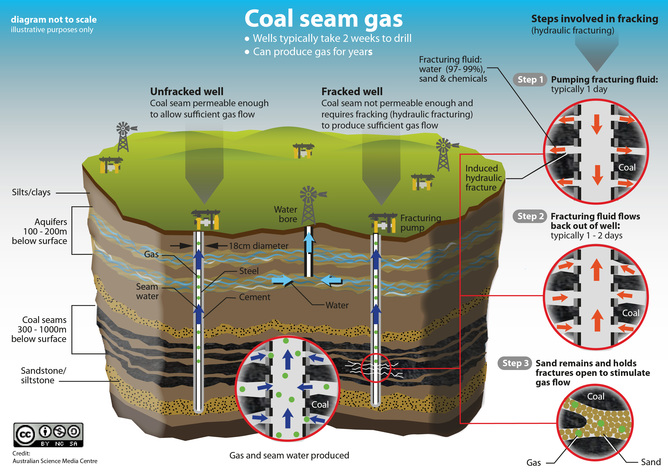
Converting tight CSG resources with graded particle injection modelling and deployment
This project aims to develop methods to unlock reserves that are currently uneconomic to access using current technology because they are too 'tight' and have low permeability.
Many of the coal seam gas (CSG) resources in Eastern Australia are currently too expensive to extract gas from with current hydraulic fracturing processes.
Improving the technology to stimulate gas extraction will open up these resources and allow for more abundant reserves. Graded particle injection (GPI) is a proposed means of increasing permeability for gas extraction by using scaled particle sizes to increasingly prop open the fractures closer to the well.
Accurate modelling of the new transport and embedment mechanisms will also be developed to assist in industry confidence of the process.
Expected project outcomes:
- Quantify GPI embedment in the Permian and Walloon Coal Measures
- Determine the GPI and fluid properties as well as the sequence for optimal injection
- Develop advanced modelling techniques for using GPI at scale
- Unlock currently unavailable resources for production and commercialisation
Graded particle injection was initially proposed to improve production in naturally-fractured reservoirs by researchers at the University of Adelaide’s Australian School of Petroleum.
This project is developing models for deployment of this promising technology for application trials in tight, low permeability coal reservoirs in CSG and potentially deeper applications to enable successful development of identified but currently uneconomic resources.
This research will integrate new technologies, apply inputs for ‘fit-for-purpose’ modelling methods, and develop ‘best practices’ for implementation under actual Australian stress regimes and reservoir conditions.
These methods may have further application in other high stress environments (e.g., India, China, Indonesia) and will translate across basins for applications in other tight unconventional resources (e.g., deep coals, shale gas, tight gas).
|
